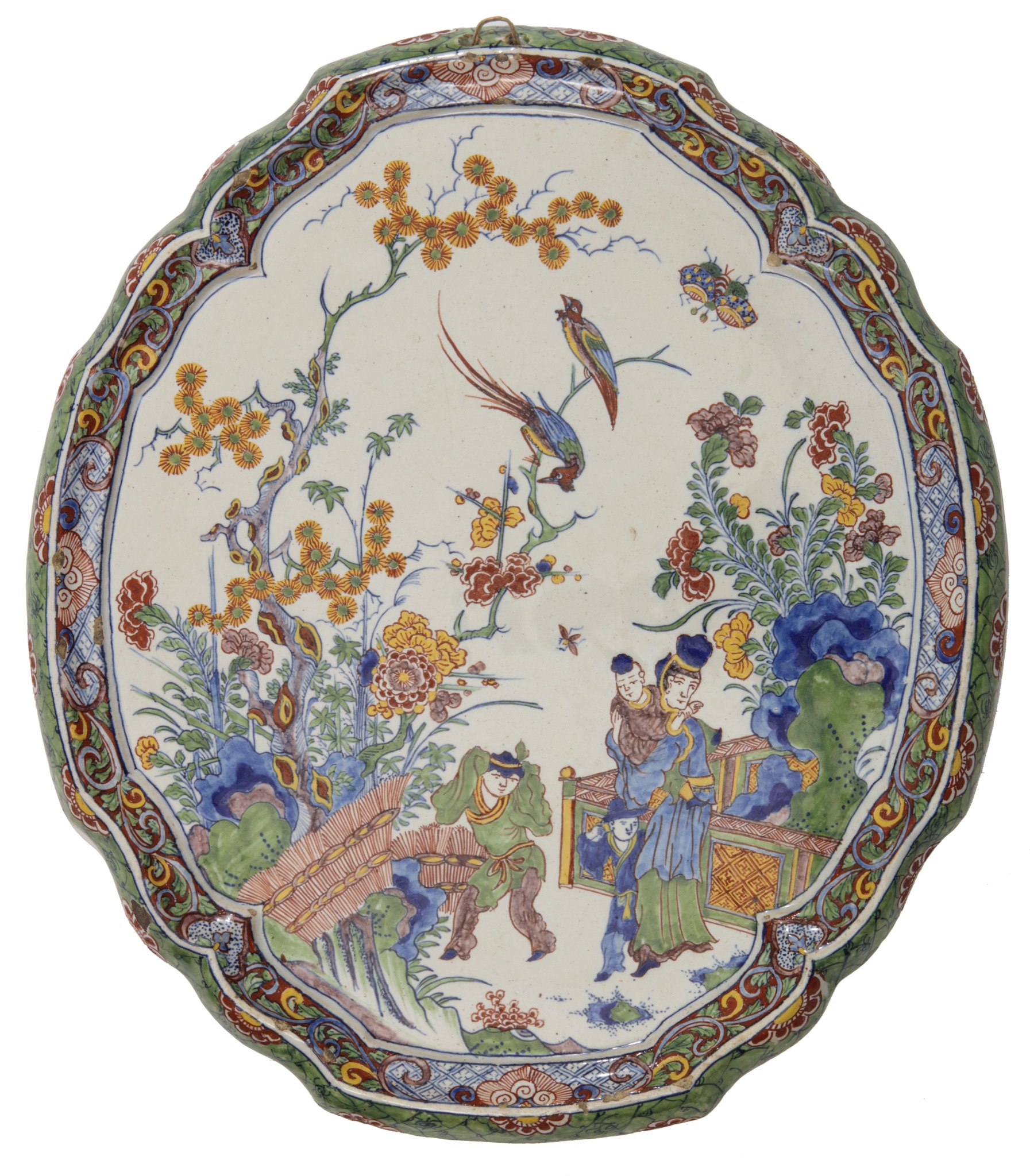![]()
Images on this website are licensed under a
Creative Commons Attribution-NoDerivs 3.0 Unported License.
OBJECT
D2429. Polychrome Cartouche-Shaped Plaque
Delft, circa 1740
Painted with a chinoiserie scene featuring a lady known as ‘Long Eliza,’ cradling her children and accompanied by two attendants, surrounded by prunus and chrysanthemum bushes emerging from behind banded hedges; behind the lady a fenced garden scene is complemented with insects and two birds perched on a branch, encompassed within a border of floral scrollwork.
DIMENSIONS
Height: 38 cm. (14,5 in.)
Width: 34 cm. (13 in.)
PROVENANCE
The Collection of M.P. Voute Jr.;
Frederik Muller, Sint-Niklaas, April 1956;
A. Vecht, Amsterdam;
Kunsthandel J. Polak, Amsterdam, 1992;
The Collection of Cornelis Paulus van Pauwvliet, Amsterdam, 2023
EXHIBITED
Kunsthandel J. Polak, TEFAF Maastricht, 1992
NOTE
“Porcelain paintings,” as they were referred to in household inventories, were intended to be admired as if they were paintings on panel, canvas or copper. The representations on the plaques are varied, and often reflect contemporary concerns and tastes. These chinoiserie motifs and the baroque design of the plaque are in complete accordance with the taste of the day. By the mid and late eighteenth century, Delft chinoiserie plaques were the absolute fashion, and they became as exuberant in their coloration as in their exotic themes. In fact, whereas the early flat, rectangular plaques were made of slabs of clay, by the eighteenth century, plaques with shaped borders in relief, representing the baroque and rococo stylistic idiom, began to be made in plaster molds. The shapes became more stylish, varied and creative. This particular scene has served as a source of inspiration for Royal Delft, who have used the imagery on objects since the late nineteenth century.









